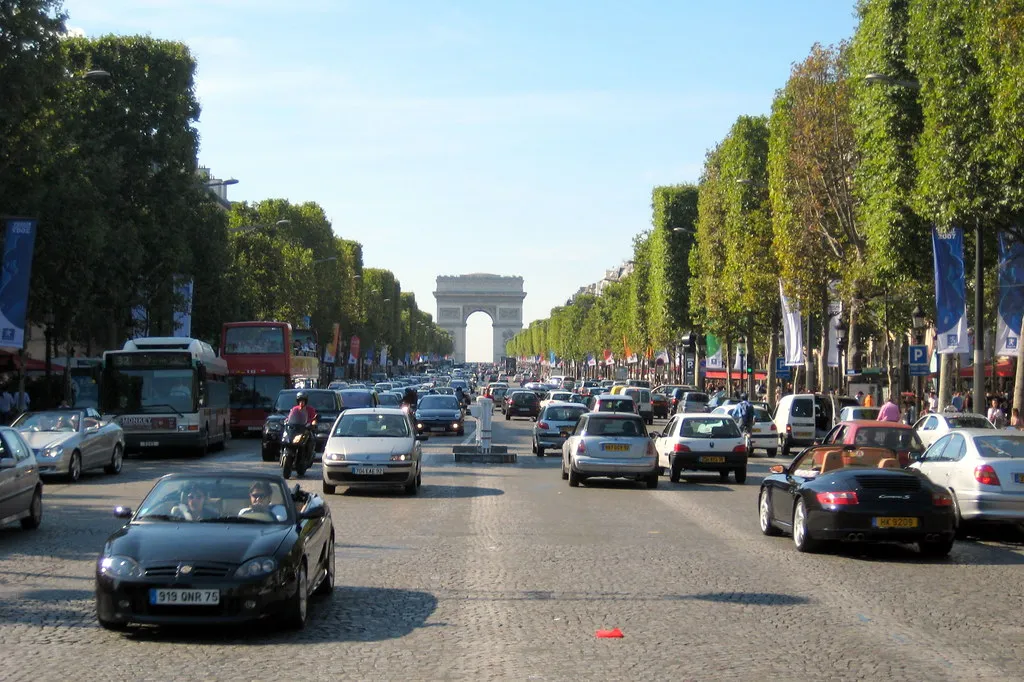Paris’ Champs-Élysées to Be Transformed Into an ‘Extraordinary Garden’
The French avenue’s “green makeover” won’t be finished until after the city’s 2024 Summer Olympics
:focal(428x222:429x223)/https://tf-cmsv2-smithsonianmag-media.s3.amazonaws.com/filer/13/72/1372b76b-838a-4c2f-8026-e1bfc09e7789/pca-stream-champs-elysees-paris-turn-garden.jpg)
Paris’ famed Champs-Élysées—the avenue leading to the Arc de Triomphe—will be transformed into a greener, more pedestrian-friendly site through a planned €250 million ($304 million) project.
Anne Hidalgo, the city’s mayor, announced the renovation’s approval in a recent interview with French newspaper Le Journal du Dimanche. As CNN’s Jack Guy reports, architect Philippe Chiambaretta and his agency, PCA-STREAM, created the plans. The local Champs-Élysées Committee, which has been working on ideas for the area for the past three years, welcomed the news in a Sunday statement.
“The mythical avenue has lost its splendor over the last 30 years,” the committee said. “It has been progressively abandoned by Parisians and has suffered a number of crises: the gilets jaunes, strikes, the health and economic crisis.”
In 2019, gilets jaunes, or yellow vest, protesters smashed the windows of luxury stores on the boulevard. They also set fire to Le Fouquet’s restaurant, a spot seen as a symbol of political elitism, as Kim Willsher reported for the Observer at the time.
Per Artnet News, Louis XIV’s gardener, André Le Nôtre, designed the avenue in 1667. Its name, which dates to 1709, refers to the Elysian Fields, a section of the underworld reserved for heroes of Greek mythology.
Since its creation, the Champs-Élysées has hosted celebrations ranging from France’s 1944 liberation to World Cup victories and the annual Bastille Day Parade. But as Louise Nordstrom reported for France 24 last February, just 5 percent of its daily visitors are Parisians. Local residents told the news network that they considered the area a “tourist trap” and “like an airport duty-free shop, but without the duty-free.”

Hidalgo tells Le Journal du Dimanche that the project will transform the 1.2-mile road into “an extraordinary garden."
The avenue currently has eight lanes of traffic, but as Willsher reports for the Guardian, the renovation will cut space for vehicles in half, making more room available for pedestrian areas and trees.
Chiambaretta tells the Guardian that an average of 3,000 vehicles drive on the street each hour, mostly just passing through on their way somewhere else. Like other urban areas, the Champs-Élysées faces problems due to “pollution, the place of the car, tourism and consumerism.”
The new plan, he adds, will make the space “ecological, desirable and inclusive.”
With Paris set to host the 2024 Olympic Summer Games, the French capital is undergoing a number of major projects, including the creation of new restaurants, hotels, museums and leisure destinations. The Champs-Élysées renovation won’t be completed until after the Olympics, but its first stage—the revamping of the Place de la Concorde at the avenue’s west end—will take place in time for the event. (Built in honor of Louis XV, the plaza became the site of the execution of his successor and grandson, Louis XVI, during the French Revolution.)
Per the Independent's Eleanor Sly, work on the avenue, which was last renovated more than 25 years ago, is expected to be completed by 2030.
/https://tf-cmsv2-smithsonianmag-media.s3.amazonaws.com/accounts/headshot/Livia_lg_thumbnail.png)
/https://tf-cmsv2-smithsonianmag-media.s3.amazonaws.com/accounts/headshot/Livia_lg_thumbnail.png)